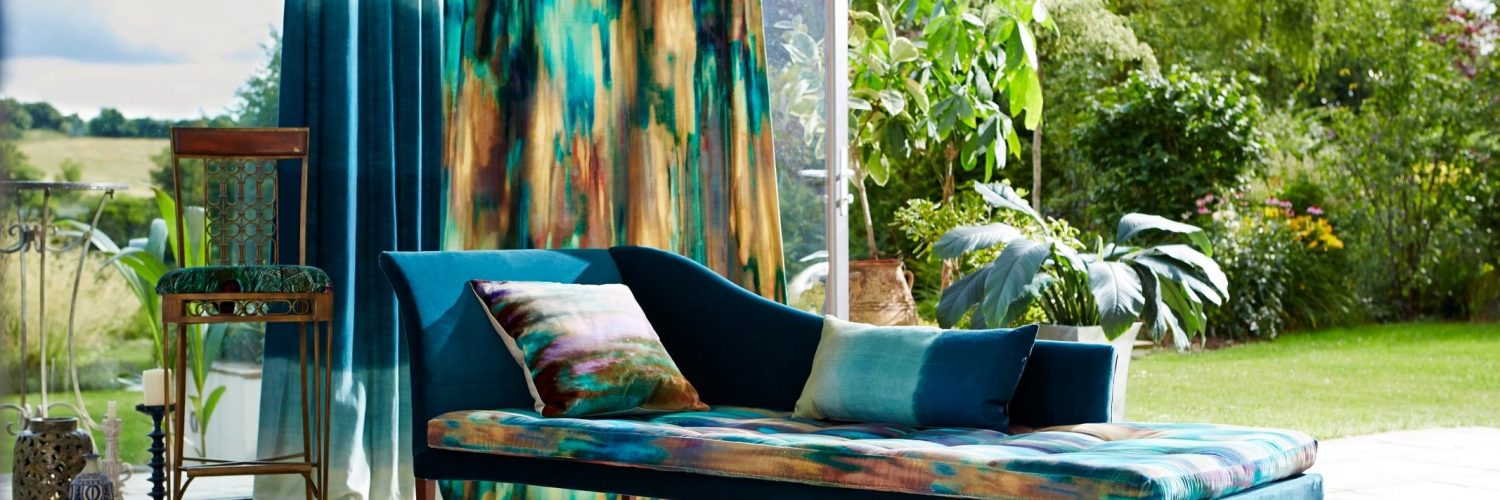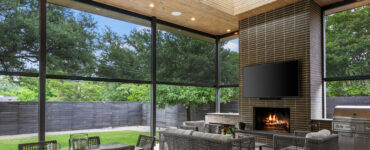
The Texas community of Corpus Christi is a renowned outdoor playground. Located on the Gulf of Mexico, it’s a top destination for college students on spring break and families looking to beachcomb and look for shells. It has a robust windsurfing community and is also popular for boating, fishing and bird watching. A mild climate means people visiting the community’s many resorts and vacation homes can enjoy Mother Nature year-round. Most locals have a pool or a boat in an abutting canal, as well as space for games, cooking and relaxing around a firepit. Nearly everyone I know has a pool as well as great outdoor living features in their backyard. They all have a patio to enjoy drinks on, a pool to cool down in, an outdoor towel rack where they keep towels to dry off with after coming out of the pool, and many have an outdoor kitchen set up.
Given the overwhelming popularity of outdoor living in the region, it’s no wonder Melissa Hammann with Riviera Décor has found great success creating exterior draperies and soft furnishings for local residents. “I love outdoor spaces and my clients do too,” she says. “For us, it’s an escape. It feels like you transport yourself because you go into a resort almost when you step outside.”
But even in places where lounging by the pool isn’t possible all year, Hammann believes the outdoor living vertical is growing. In addition to being a special place where people can spend time with their families, homeowners are realizing well-appointed patios and yards can bring a monetary gain at some point. “It does bring value to the resale of a home because I do think it’s in people’s minds that perceived living space is as crucial as the actual living space,” she says.
Hammann has had over 15 years to watch this industry grow and flourish. She started her career as an educational diagnostician, a position similar to a school psychologist. When she had her own children, she wanted to be home with them, so she left education and turned her attention to homemaking. At that time, one of her goals was to make her backyard a comfortable and attractive extension of the house. (The family’s home is adjacent to the ocean, so it’s visible to anyone walking or sailing by.)

Between raising her four kids, she made draperies and partitions for the patio and pool area. As soon as her neighbors saw them, they wanted to know where she’d gotten them. When they learned she’d made them, they wanted to know if they could order their own. Just like that, Hammann had a whole new career. It was hard for her to believe that a career could so easily be started by some draperies and a fabric-cutter (such as the ones you can purchase via https://www.accuquilt.com/fabric-cutting-machines.html).
“I thought, ‘If I’m going to do this, I’m going to do it right.’ You only get one chance to make a good impression,” she says. Many of her clients need help with second homes, and they tend to be very sophisticated consumers with high expectations for quality. She enrolled at the Custom Home Furnishings Academy, then earned a degree from the New York School of Interior Design.
In addition to her design education and her ongoing participation in groups like the Window Coverings Association of America, Hammann credits her success with outdoor draperies to a proprietary system that allows her to create curtains that put safety first-something every window fashions professional should keep in mind when designing for outdoor spaces. In Corpus Christi, it’s not unusual for wind gusts to reach upward of 80 miles per hour. People had tried putting weights in the bottom hem of their outdoor curtains to hold them down, but those heavy objects become projectiles when the wind is high. There was a local case of a child being injured when the drapes acted like an untethered sail and whipped around during a storm.
“Everything we were hearing said tie the drapery down, but if you do that, it creates the sail effect and wears the fabric down,” Hammann said. “What should last 15 years will be destroyed in two years.”
Hammann’s husband is an engineer, and he put his knowledge to work to help her design outdoor draperies that would work with the wind, not against it. Curtains made with that process will be a primary focus of her forthcoming subsidiary business, Riviera Outdoor Décor.

“Outdoor living requires a very different perspective than what you would think for interior products,” Hammann says. “To make outdoor curtains, you really need a knowledge of wind gusts and how to engineer your drapes to properly channel the air to lessen the sail effect.” You should also make sure that the drapings complement the rest of the outdoor furniture. If you’re looking for new tables and chairs for an outdoor dining set-up, you might want to look at GardenFurniture.co.uk (for more information, click here) or other similar furniture stores.
When it comes to creating cushions for couches and chairs, “some workrooms think you need to cover them with foam and plastic, but you also need to allow for the water to pass through and not trap it. When you construct the cushions, you need to give them enough of a dome that the water does not stay on the cushion but rolls off.”
She also finds there’s a certain seasonality to outdoor furnishings. Clients often want one set of products for summer and another set for fall. “You’ve got to take the cushions off anyway to either wash them yourself or find a cleaning service here who can give them a deep clean, if they need it,” Hammann points out. “During the summer we use a lot of cool colors like blues and whites. During the fall we bring in more earth tones. So make sure you sell for the seasons.”
When she does interiors, Hammann is still getting lots of requests for formal draperies with plenty of “whoop-de-do,” especially for two-story windows. Clients are also very interested in plantation shutters. “Roman shades are huge everywhere else, but not in our area,” she says. “In 15 years I’ve made maybe 15.”
Although she’s happy to talk about trends in products and business, one of the things Hammann observed early in her design career was that it was less important to understand the overall direction the industry was going and more important to develop a deep knowledge of the needs within her marketplace. “When I started this business, I thought to grow I needed to follow other models that I thought were successful. It wasn’t until I started studying my market and my demographics and really knowing who my competition was-and how to differentiate myself from them and what value I bring to my clients that my competition doesn’t-that I started to be successful.”
Similarly, she encourages designers not to think there’s one cookie-cutter formula for success with marketing. “In our business, there are people who think it’s one way of marketing or one way of doing a business for everybody. But people don’t realize that there’s something different about every market and every ideal customer in that market.”
Hammann does, however, encourage people to embrace digital marketing whenever possible. “A lot of people are still thinking you need to market like you did 20 years ago,” she says. “But this is a totally different market, and you should try to understand it and embrace it. We now have a lot of opportunities to get our brand out there and control more of the marketing process than we used to.”
Please note: All photos in this article courtesy Eddie Seal Photography.





